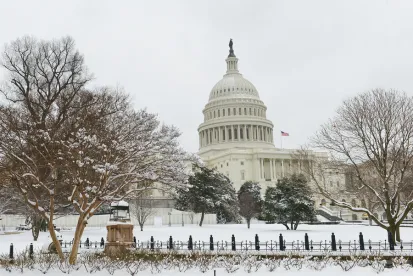Administration Releases FY2021 Budget. D.C. policy watchers dove headfirst into President Donald Trump’s 2021 budget this week, looking for clues and insights into where the administration may be heading in a variety of policy matters. Though federal law requires the president to release a budget, the utility of the exercise is dubious, as Congress retains the “power of the purse” and ultimately makes the decisions on where to allocate federal funds. The budget is instead a political document, but it can provide a sense of where the administration stands on certain things. As for labor and employment projections, the president’s Fiscal Year (FY) 2021 budget seeks an overall reduction in funds for the U.S. Department of Labor (DOL) (a 10.5 percent cut), the National Labor Relations Board (a 10.2 percent cut), and the Equal Employment Opportunity Commission (EEOC) (a 7 percent cut), but it would increase H-1B fees (a budget request that has been made in prior years).
Coronavirus in the Workplace. The developing coronavirus (COVID-19) situation has both government officials and employers concerned as to how best to keep workers safe and healthy. Fortunately, Sean Paisan has an analysis of a recent Occupational Safety and Health Administration (OSHA) guidance on the topic, and Michael Oliver Eckard has the scoop on recommendations from the Centers for Disease Control and Prevention.
EEO-1 Done. For Now. On February 10, 2020, the U.S. District Court for the District of Columbia ruled that the EEOC’s collection of compensation data is complete and that the Commission “has no remaining obligations” as a result of the court’s 2019 orders that reinstituted the 2016 EEO-1 Component 2 data collection scheme. The EEOC represented to the court that nearly 89 percent of eligible filers have submitted EEO-1 Component 2 data for calendar year 2017 and almost 90 percent of eligible filers have submitted data for calendar year 2018. But while the collection of data for these years may be complete, the appeal of the decision to reinstate the information collection is still pending. Moreover, a revised EEO-1 form (that does not include wage/hours worked reporting) is still awaiting approval from the Office of Management and Budget. Finally, do not forget that the EEOC hasn’t completely dismissed the concept of pay data reporting.
Paid Leave Season. The paid leave debate is heating up in D.C., as it often does as the calendar advances toward spring. This debate is especially pronounced this year, as the matter is a focus of many political campaigns. This week, the U.S. House Subcommittee on Workforce Protections held a hearing on expanding the Family and Medical Leave Act, which covered eligibility for leave, reasons for taking leave, and how to pay for it. The hearing follows a similar hearing that took place on January 28, 2020, in the U.S. House Committee on Ways and Means, as well as President Trump’s endorsement of the bipartisan Advancing Support for Working Families Act in his State of the Union address. Also, our commentary on the president’s budget notwithstanding, his request provides $750 million for states to fund paid parental leave programs.
Making History. On February 11, 2020, the U.S. House of Representatives passed the Smithsonian Women’s History Museum Act. The bill directs the Board of Regents of the Smithsonian Institution to establish a museum in order to provide for “the collection, study, and establishment of programs relating to women’s contributions to various fields and throughout different periods of history that have influenced the direction of the United States.” As for the location, the bill provides two suggestions: near the Washington Monument or across the street from the DOL’s Frances Perkins Building (a familiar spot to the Buzz). Perhaps the best part is that, if the museum comes to fruition, its relationship with the Smithsonian means that it will likely be free to attend!




 />i
/>i

